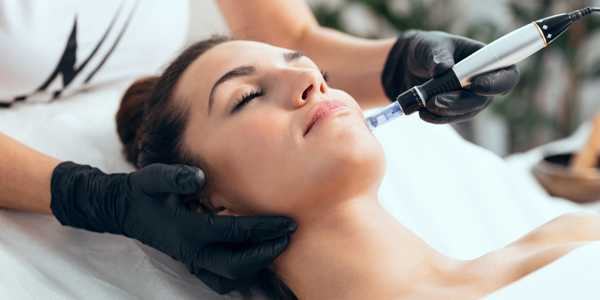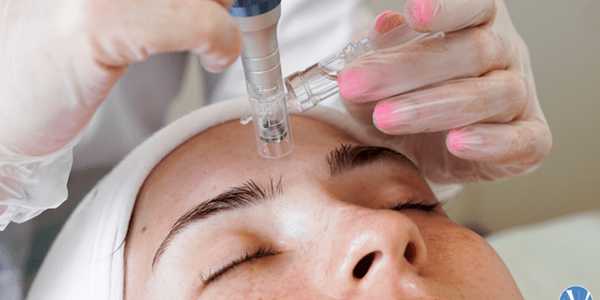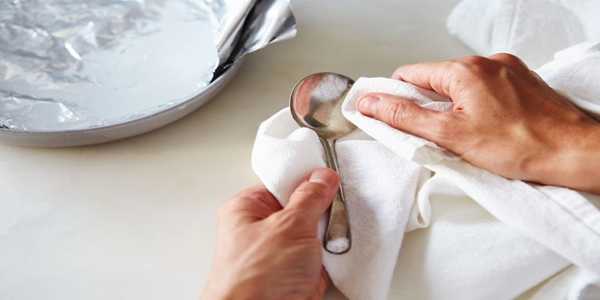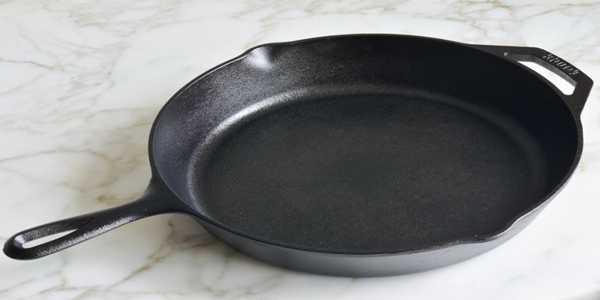What Does Microneedling Do for Your Skin?
Microneedling, a widely recognized skincare treatment, involves deploying fine needles to induce micro-injuries on the skin's surface, stimulating the body's inherent healing mechanisms. Developed by dermatologists in the early 1990s, the technique was originally aimed at treating scars but has since become a favored method for enhancing skin texture, reducing fine lines, and improving overall complexion.
The Science Behind Microneedling

Microneedling is a cosmetic procedure that utilizes a specialized device fitted with fine needles to execute controlled micro-injuries within the skin's outer layer. This cutting-edge approach triggers the body's natural wound-healing response, igniting a physiological cascade bolsters skin health and aesthetics. Upon puncturing the skin, growth factors and cytokines are released, leading to an uptick in collagen and elastin production. Both proteins are crucial for maintaining skin firmness, elasticity, and overall texture.
The depth of the micro-injuries varies, and they are tailored to the specific area treated and the device employed. Mechanical instruments such as dermarollers establish precise channels that enhance the absorption of topical serums, amplifying their effectiveness. As the skin recovers, the newly synthesized tissue replaces damaged skin, resulting in a smoother and more youthful appearance.
Mild redness, swelling, and pinpoint bleeding are common skin reactions post-treatment, typically resolving within a few days. This slight trauma plays a pivotal role in the treatment's efficacy, laying the foundation for skin rejuvenation. With appropriate aftercare, micro needling can yield lasting improvements, highlighting the scientific principles behind effective skincare practices.
Benefits of Microneedling
Microneedling presents numerous benefits that extend well beyond basic aesthetic enhancements. One of the most compelling advantages is its capacity to improve skin texture and tone. The treatment stimulates collagen and elastin production by inducing micro-injuries, significantly diminishing the appearance of fine lines and wrinkles. A study indicated that over 80% of participants observed visible improvements in skin texture following several microneedling sessions.
In addition, microneedling shows promising results for minimizing acne scars. A clinical trial revealed that participants reported an impressive 50% reduction in severe acne scar severity, demonstrating the treatment's regenerative effects.
Moreover, microneedling enhances the skin's absorption of topical products, such as serums and creams. The micro-channels created during the procedure boost skin permeability, leading to an astonishing 80% increase in the absorption of active ingredients, as established by research. Consequently, products applied after treatment can provide deeper, more effective results.
Microneedling is also gaining attention in hair restoration applications. Research indicated that 65% of patients undergoing microneedling combined with minoxidil treatment experienced marked hair regrowth compared to control participants. Such promising evidence positions this dual approach as a compelling alternative for effectively combating hair loss.
In essence, microneedling is a multifaceted treatment that not only enhances the skin's appearance but also boosts product absorption and encourages hair growth, thus establishing its significance in the modern dermatological landscape.
Risks and Considerations

Although microneedling benefits many, it carries certain risks and side effects that warrant thorough consideration before treatment. Common side effects include discomfort, temporary redness, and swelling at the treatment site. While these symptoms generally subsist within a few days, they can bother some individuals.
Significantly, there exists a risk of infection, especially if the procedure is executed in non-sterile environments. The micro-injuries facilitate potential bacterial entry, leading to complications that can arise from inadequate hygiene during treatment.
Prospective patients must evaluate their skin conditions before committing to a session. Those with active acne, eczema, psoriasis, or other inflammatory skin disorders should generally refrain from microneedling, as these conditions can heighten inflammation and compromise healing. Additionally, individuals who have previously experienced keloid formation should discuss the risks with a provider before proceeding. By being aware of these potential complications, patients can make informed choices regarding whether microneedling meets their skincare needs.
Navigating the Microneedling Journey
In brief, microneedling emerges as an innovative skincare treatment with several significant advantages, including enhanced skin texture, decreased visibility of scars, and improved absorption of topical treatments. The benefits stem from the procedure's capacity to promote collagen synthesis and encourage cellular turnover, contributing to a more youthful appearance. Nonetheless, possible risks—like infection, inflammation, and allergic responses—should be acknowledged, ensuring a safe treatment experience. While evidence suggests the benefits may outweigh these risks for many individuals, particularly in professional environments, achieving successful results relies on informed decision-making.
Thus, individuals need to consult with a certified dermatologist or skincare specialist before undergoing treatment. Such professionals can offer personalized evaluations, discuss possible allergic reactions, and determine the suitability of microneedling based on an individual's unique skin type and concerns. Ultimately, making informed choices grounded in professional insights will facilitate a safe and effective journey through skin rejuvenation, enabling patients to fully enjoy the rewards of microneedling while mitigating potential side effects.




















